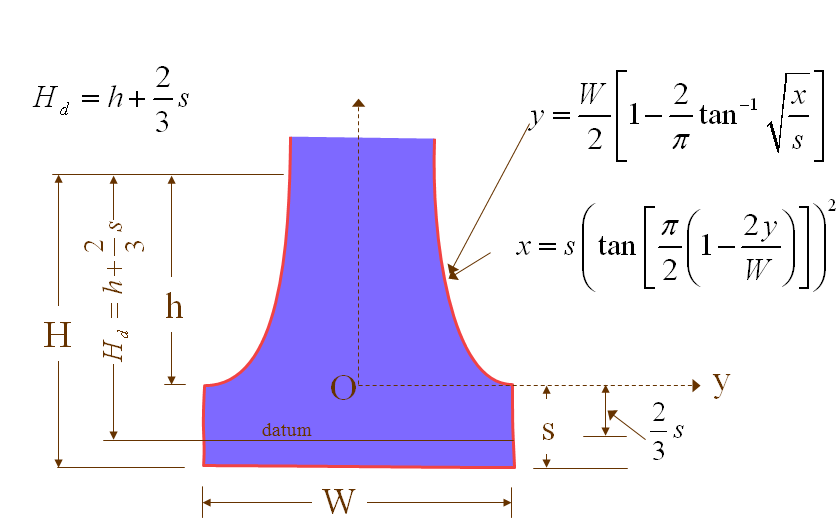Sutro Weir Research
Introduction
Definition of Weir : A type of small overflow dam that can be used for flow measurement. The Linear Flow Orifice Meter is a mimic of a weir.
Definition of Sutro Weir : The dicharge (flow) through the weir is proportional to the head (water depth above a refernce plane located at one third of the depths of the crest of the base weir
Development : The linear-proportional weir was developed by Stout in 1897 and was theoretically based, the design stipulated the width at the base as infinite. In 1908 Sutro modified the design to create a practical linear-proportional weir, known as the sutro weir. The sutro wier has a rectangular base and the flow through the wier is proportional to the height of the water through the curved portion of the weir plus
$$ 2\over 3 $$
of the height of the rectangular base ie.
$$ Q = c [h +
s] $$
Source 1: Prof. B.S. Thandaveswara from the Indian Institute of Technology Madras website

Figure 1: Sutro weir with constraining equations.
- Note: The rectangular base is present in the design merely to simplify evaluation and analysis. Flow proportional to water height begins above the rectangular weir.
Variables
W = base of rectangular weir
s = height of rectangular weir
h = wier hight above rectangular weir
c = constant of proportionality
$$ C_d $$
= coefficient of dicharge, ranges from 0.0597 to 0.619
$$ q_w $$
= Flow through rectangular weir
$$ q_u $$
= Flow through upper portion of weir,Important Parameter
Q = Total Discharge
$$ C_0 $$
= Proportionality constant, average value is 0.62
g = 9.81